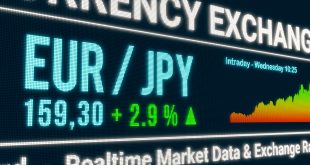From June 13 to June 19, 2025, maritime shipping costs, prices, and stock performance surged, driven by escalating geopolitical tensions in the Middle East. Freight rates for containers and tankers soared, vessel traffic through critical routes dwindled, and shipping stocks rallied. This volatile week highlights how conflicts disrupt global trade, raising urgent questions about the industry’s resilience and future stability.
Freight Rates Skyrocket
Geopolitical tensions, particularly in the Strait of Hormuz, triggered sharp freight rate increases. On June 13, container rates from Asia to Europe rose 6.57% week-on-week, while Asia-to-Mediterranean routes jumped 13.43%, reaching $2,935 per FEU by June 18. Tanker rates saw even steeper spikes: Gulf-to-Asia VLCC rates soared 40% from $19,998/day to $47,609/day by June 19, with product tanker rates climbing from $21,097/day to $51,879/day. Forward freight agreements for July Middle East-to-Asia routes rose 15% to $12.83 per metric ton. A 12% spike in Brent crude to $78 per barrel on June 13, later settling at $72–$75, inflated fuel costs. War-risk premiums for vessels transiting the Persian Gulf doubled from 0.05%–0.07% to 0.2% of hull value, adding $200,000 per passage for a $100 million ship. These figures reflect heightened risks, compounded by electronic interference disrupting navigation systems in the Gulf, forcing rerouting around the Cape of Good Hope, which adds $1 million per round trip for large vessels.
Route Disruptions Intensify
Real route news underscores the crisis. The Strait of Hormuz, handling over 20 million barrels of oil daily, saw vessel traffic drop from 147 cargo ships on June 9 to 111 by June 15, as operators avoided the chokepoint due to fears of escalation and reported tanker collisions on June 17. Suez Canal traffic plummeted, with container vessel transits down 90% due to ongoing Red Sea attacks, pushing most ships to the longer Cape route. These disruptions tightened capacity, with vessels departing Asia at half capacity amid U.S. tariff impacts, exacerbating rate hikes and slot shortages for exporters.
Stock Markets Surge, Then Stall
Shipping stocks reflected the freight rate boom, with gains of 5–13% on June 13, driven by expectations of sustained high rates. Some firms saw year-to-date gains of 60%, though others faced 9% declines due to overcapacity fears. By June 19, investor caution emerged, as tanker freight rates in key segments were lower year-on-year, averaging $46,690/day for Suezmax routes versus $52,540/day in June 2024, signaling potential oversupply. This mixed performance suggests short-term gains may not persist without sustained geopolitical pressures.
Navigating an Uncertain Future
The week’s turmoil could raise global consumer prices by 0.6% in 2025, as projected in mid-2024, threatening economic stability. With vessel supply growth outpacing demand, freight rates may soften later in 2025, despite current spikes. The industry must adapt by diversifying routes, enhancing navigation resilience against electronic interference, and investing in fuel-efficient vessels to counter rising costs. The period of June 13–19, 2025, exposed the maritime sector’s vulnerability to geopolitical shocks. While high rates and stock gains offer short-term opportunities, long-term stability hinges on navigating an increasingly unpredictable global trade landscape.

 Noor Trends News, Technical Analysis, Educational Tools and Recommendations
Noor Trends News, Technical Analysis, Educational Tools and Recommendations




